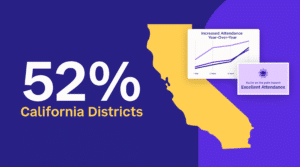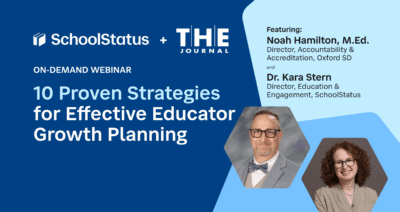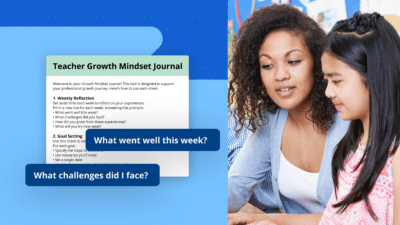![[Boost] [Case Study] Wahoo Public Schools – featured image Photo of female Asian educator with graphics and text illustrating her observation information](https://www.schoolstatus.com/wp-content/uploads/HERO_Boost-Case-Study-Wahoo-Public-Schools-400x225.png)
Featured Resource
Why Over Half of California School Districts Trust SchoolStatus
Read More >Join Mission: Attendance to reduce chronic absenteeism in 2025-26! >> Learn How <<



Learn how Hesperia USD uses SchoolStatus Boost: Coach to create a data-driven instructional coaching program that improves teacher practice and student outcomes.
![Hero_[Boost] Hesperia Unified School District](https://www.schoolstatus.com/wp-content/uploads/Hero_Boost-Hesperia-Unified-School-District-900x506.png)
Organization: Hesperia Unified School District (HUSD)
District Size: 20,000 students
Product: SchoolStatus Boost: Coach
Location: California
Hesperia Unified School District (HUSD) in California has long recognized the power of instructional coaching to support teacher growth and student achievement. Since their initial adoption of SchoolStatus Boost: Coach during the pandemic, the district has transformed its coaching program from a decentralized support system into a data-driven engine for instructional improvement, and it shows.
When HUSD first introduced site-based coaching, the goal was to provide every teacher access to a thought partner embedded within their school community. Today, nearly every campus has a dedicated instructional coach, supported by content specialists in early literacy and math. While these changes were foundational, what has truly propelled the district forward is how they’ve used coaching data to reflect, refine, and realign their system.
“The data is a support. It’s your advocate,” said Keri Livingston, Hesperia’s Coordinator of Professional Development and Teacher Induction, when commenting on how instructional coaches are buoyed by data in SchoolStatus. Access to robust data has completely transformed how coaches and principals approach their work.
One of the most powerful ways Hesperia has embedded SchoolStatus into its coaching culture is through regular data reflection. Coaches review their own data monthly and engage in detailed data dives with Ms. Livingston at the end of each semester.

These conversations dig deep, examining how much time is spent in direct work with teachers, the types of support being offered (e.g., modeling vs. co-teaching), and how aligned coaching cycles are with district and site goals. Initially, only 28% of coaches’ time was spent in direct instructional support. Today, that number has grown to 51%, with a district target of 55% for the coming year.
“We ask: What story is your data telling? If something seems off, is it because you’re being pulled into admin work? Or is it a logging issue? Or is the focus just off?” Livingston explained.
This granular use of data doesn’t just support coaches, it protects them. When data shows a coach is being overutilized for tasks outside their core role, it sparks collaborative problem-solving with principals to ensure coaching time is preserved for teacher growth.
SchoolStatus’s reporting features have also made a meaningful difference in how coaches and principals partner. Coaches are encouraged to review data with their principals at least monthly, and Livingston uses aggregated data to highlight trends, identify roadblocks, and reinforce shared accountability.

One key shift was creating principal-coach agreements that outline site priorities and define how coaching efforts will align. Then, using SchoolStatus, Livingston can cross-reference coaching logs with those goals to ensure the work is targeted and strategic.
“If a coach is focusing on writing in science and history, and that was the site’s goal, we should see that reflected in the data. It gives us a clean line of sight into the fidelity of implementation,” she said.
This transparency has encouraged principals to think more critically about how they deploy their coaches and even led some to proactively adjust their plans when they see mismatches between intention and practice.
Internally, Hesperia has created a professional learning community for its coaches grounded in data reflection and collaboration. Each month, Livingston presents a district snapshot—coaching time trends, focus areas, goals—and invites coaches to analyze it together.
They also conduct goal-setting reviews, examining sample goals in SchoolStatus to distinguish between strong, actionable objectives and those that need refinement. Coaches learn from each other, reflect on their own practices, and strive to improve the depth of their impact.
Coaches also engage in coaching labs, peer observations, and cross-campus collaboration through regional cohorts—complete with team shirts and themed mascots. These efforts have fostered a vibrant coaching culture rooted in both accountability and camaraderie.
Livingston describes the role of an instructional coach as a unique one. “They are not an administrator, but they also are not teachers anymore,” she explained, and they’re each the only instructional coach embedded at their school sites. It can be a uniquely lonely road. But, the frequent data chats that have made way for genuine friendship have improved morale amongst the 22 coaches and contributed to strong retention.

All of this data-informed support is paying off. Student test scores are improving for the first time since the pandemic, and internal survey data shows teacher trust and clarity around the coaching role is rising.
Instructional coaches are now fully integrated into school systems—leading PLCs, supporting new teacher onboarding, participating in teacher planning days, and serving as connectors between district specialists and campus needs.
Livingston credits the district’s partnership with Learning Forward for helping them shift from an individualistic coaching model to one focused on systems coherence. SchoolStatus, she says, is what made it all visible.
“We finally have a coherent system. Coaches are clear on their role. Principals see their value. Teachers are engaging in meaningful cycles. And SchoolStatus gives us the proof we need to keep getting better.”
Hesperia Unified School District shows what’s possible when coaching data is used not as surveillance, but as a shared mirror—helping educators see what’s working, what’s not, and how to grow.
As Hesperia looks forward to the years ahead, it’s clear that a strong, clear role for instructional coaches will continue to increase student achievement and dramatically improve teacher practice. And, they’ll be able to prove it with SchoolStatus.
![[Boost] [Case Study] Wahoo Public Schools – featured image Photo of female Asian educator with graphics and text illustrating her observation information](https://www.schoolstatus.com/wp-content/uploads/HERO_Boost-Case-Study-Wahoo-Public-Schools-400x225.png)


Ready to learn more about our suite of solutions?
